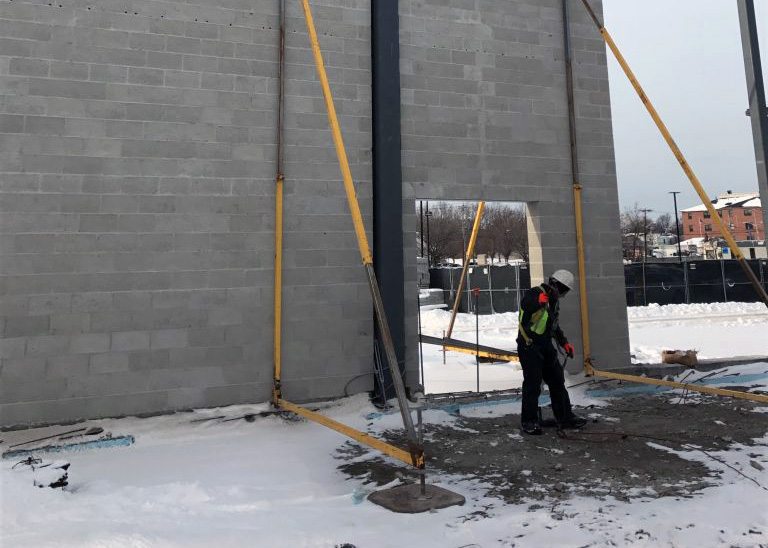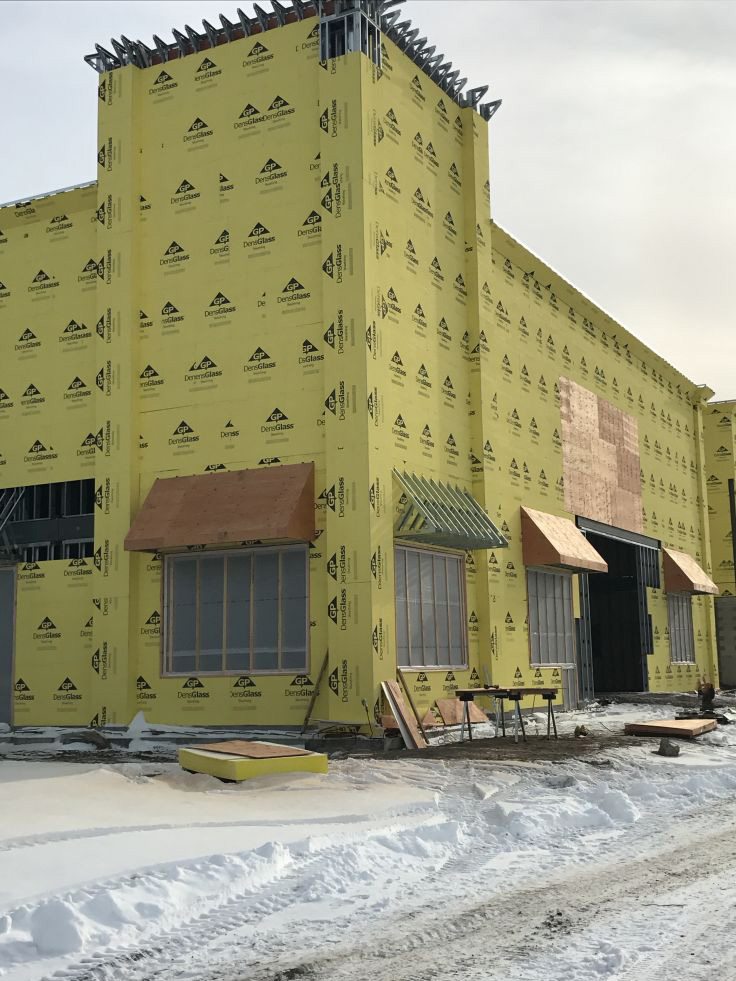
Lidl construction site; Danville, Va.; early 2017
The first official day of winter is December 21, though many areas across the country are already experiencing its hazards in full force.
While many occupations need only to worry about dressing appropriately and tracking the changing forecast, winter brings unique hazards and challenges to construction job sites.
Here are some tips from the EMJ team on preparing job sites for wintry weather.
People
Every superintendent’s top priority is the safety of his or her people, and winter brings risks that can be less noticeable than heat-related conditions. For example, fingers and hands are less nimble in the cold, which leads to accidents, and warm layers can hide signs of dehydration and overheating.
“To avoid these conditions, site leaders should designate a heated space for teams to warm up throughout the workday when temperatures are especially low,” says Brian Tiehen, Quality Manager at EMJ Construction. In addition, remind employees to bring winter gear in case of unexpected conditions.
Schedule
The unknowns of winter months can lead to project delays and frustration for both contractors and clients. Teams should take advantage of good weather and perform site work as quickly and efficiently as possible when conditions are positive for construction. However, know when it’s time to stop work and remain off of the job site during unsuitable weather.
“When possible, stay off of the site during severe weather conditions. It makes more of a mess than the work your team will be able to accomplish,” says Shane Hurley, Lead Superintendent of EMJ Construction Chattanooga. “And, cover all site work as quickly and effectively as possible.”

Meadow Glen Marketplace; Medford, Mass.; January 2017
Budget
There are several unique tactics that should be considered and budgeted for in advance of building through the winter season.
“On occasion, we’ve tented the building to avoid weather delays. It is, of course, an added cost, but is well worth it when we complete the project on time and the client can begin bringing in revenue,” says Tom Rue, Superintendent of EMJ Special Projects.
“Make sure you budget for concrete blankets, heaters, etc. in advance of pouring in winter months. Those add up surprisingly quickly,” says James Busbin, Lead Superintendent for EMJ Construction Chattanooga.
“It’s better that you return some cash back to the client after closeout if you don’t end up needing to purchase them, rather than adding cost if you do.”

Meadow Glen Marketplace; Medford, Mass.; January 2017
Site
Though not all delays due to unfavorable weather can be avoided, tools such as screens, heaters and anti-freeze can assist teams in preventing them.
“Use screens on scaffolding to raise the temperature at the building surface to allow subcontractors to apply materials such as mortar, EIFS and paint,” says Rue.
“Natural gas heaters (salamanders) can raise interior temperatures to allow work to continue and maintain manufacturers requirements for storage of materials,” he continues. “They can also protect piping such as sprinkler lines that once tested are usually holding pressurized water.”
However, if using gas heaters, ensure positive airflow to maintain breathable air. “I use RV anti-freeze in the P-Traps because sanitary tends to hold water during the winter,” says Busbin.
RV anti-freeze does not contain glycol, is environmentally friendly, and is designed to be flushed into the sanitary systems.
Questions about how to prepare your site and team for winter weather? Contact Jonathan Horne, EMJ Director of Quality, at jhorne@emjcorp.com or 423.490.3280.
